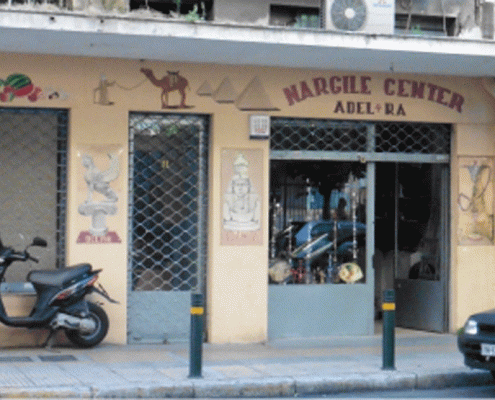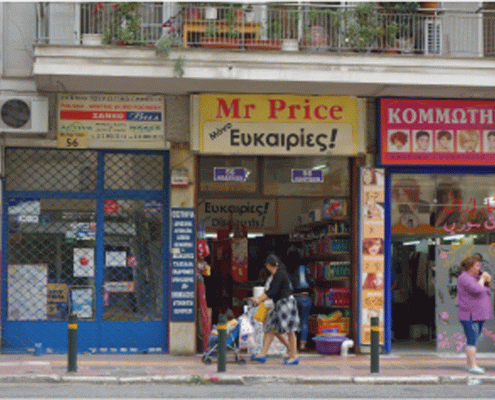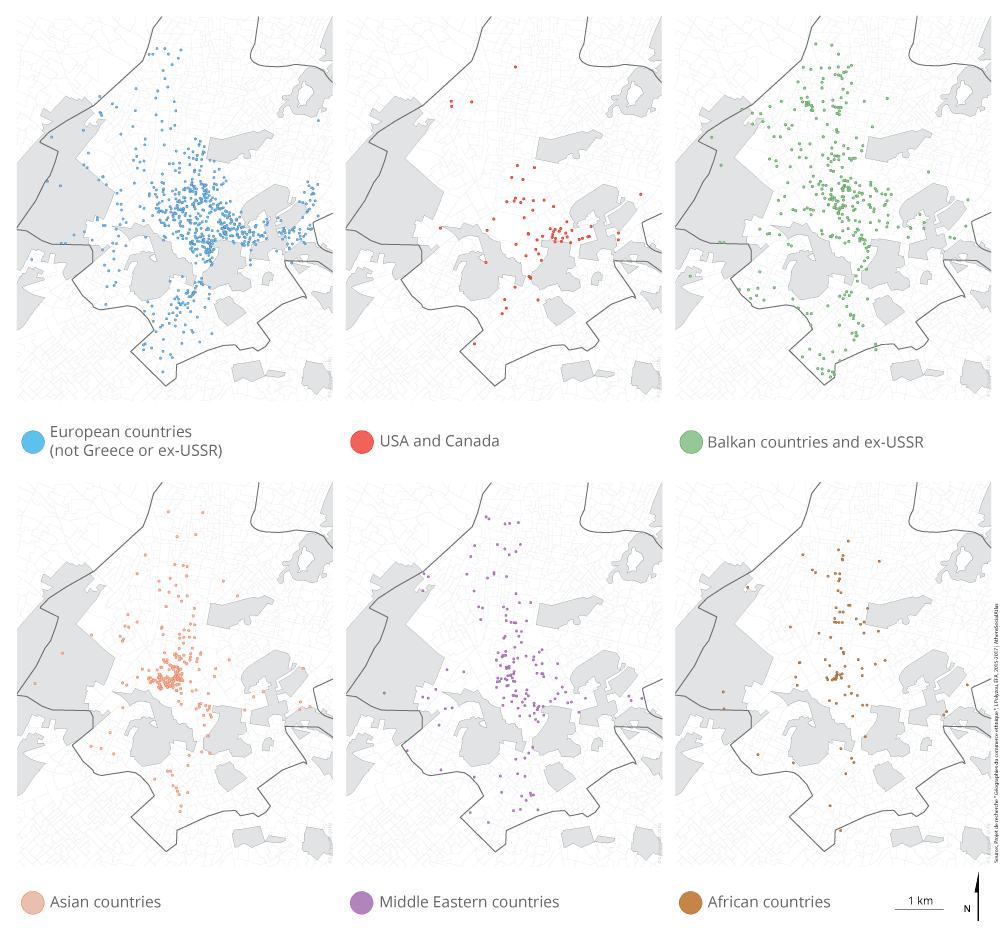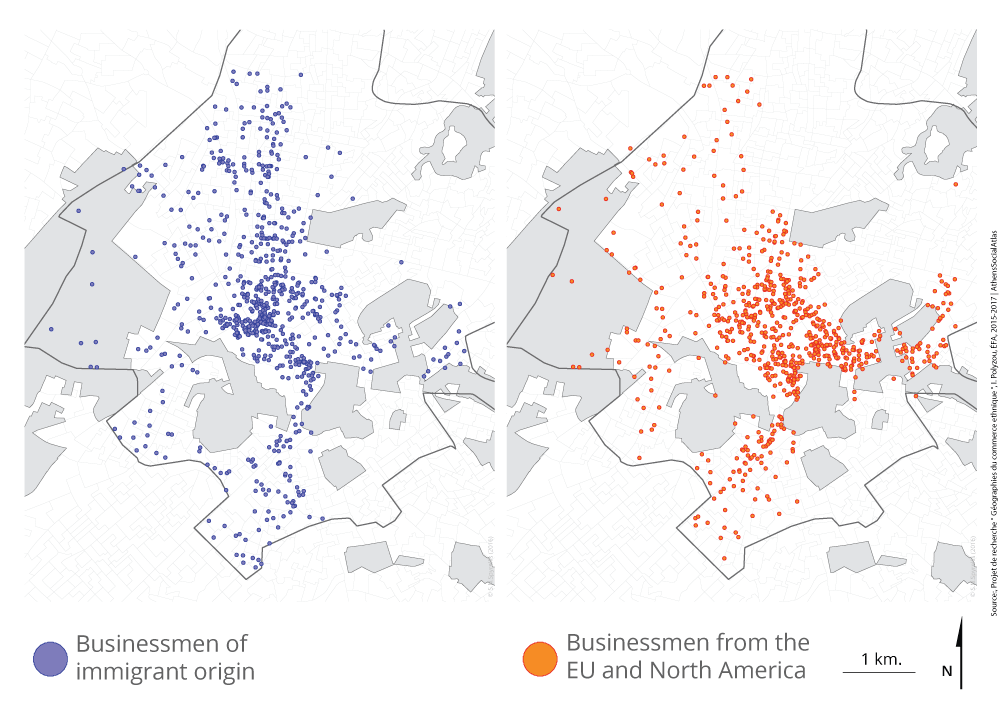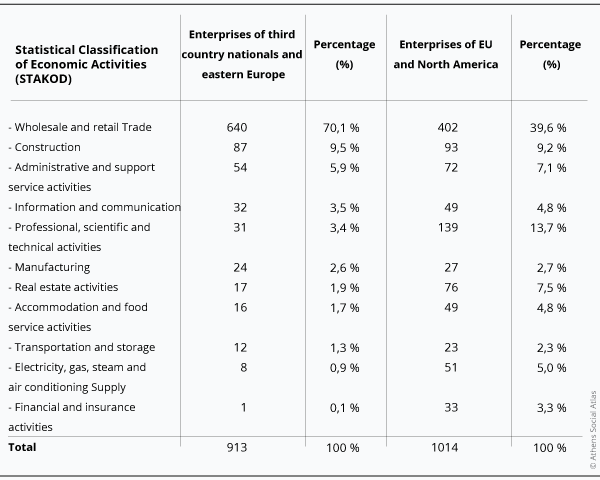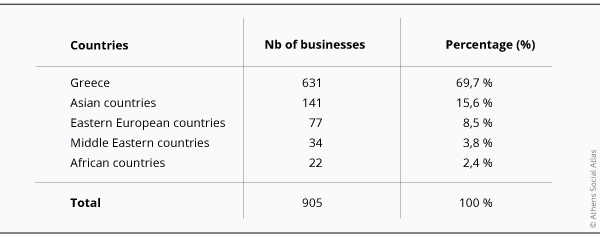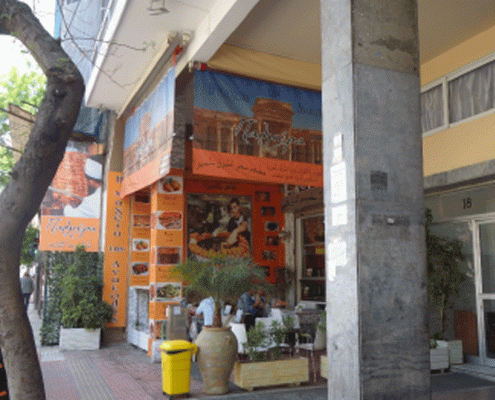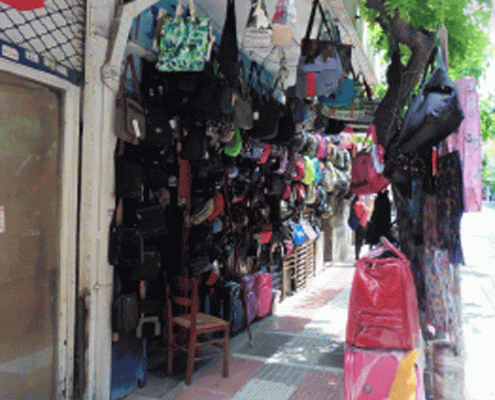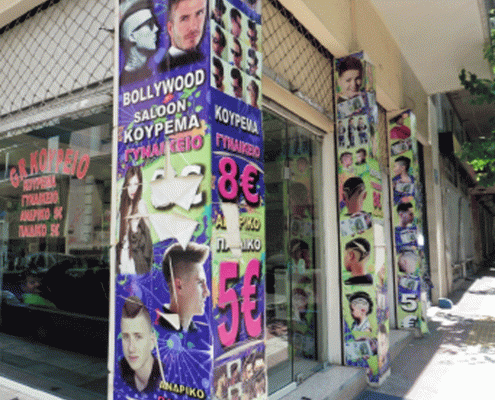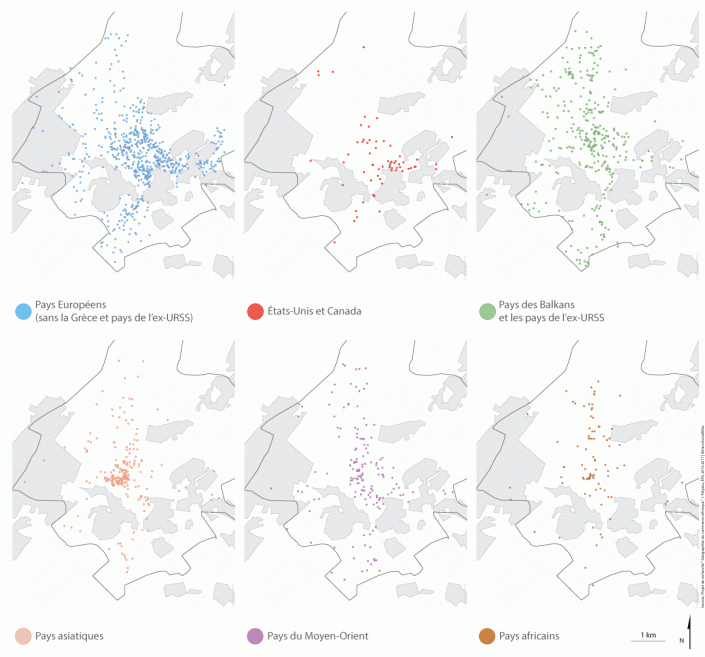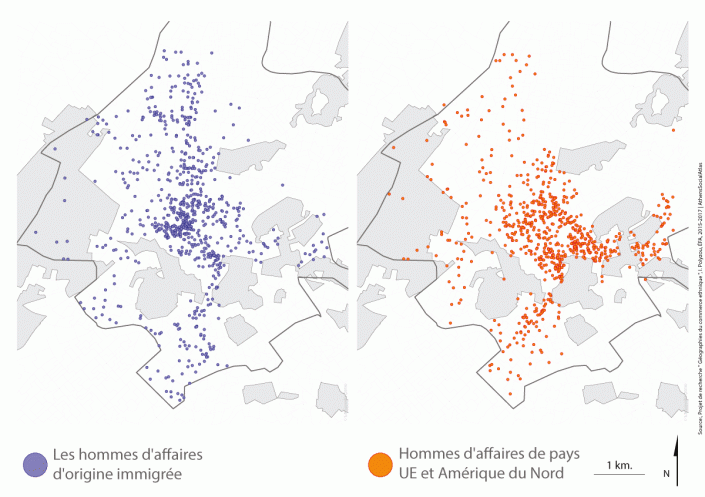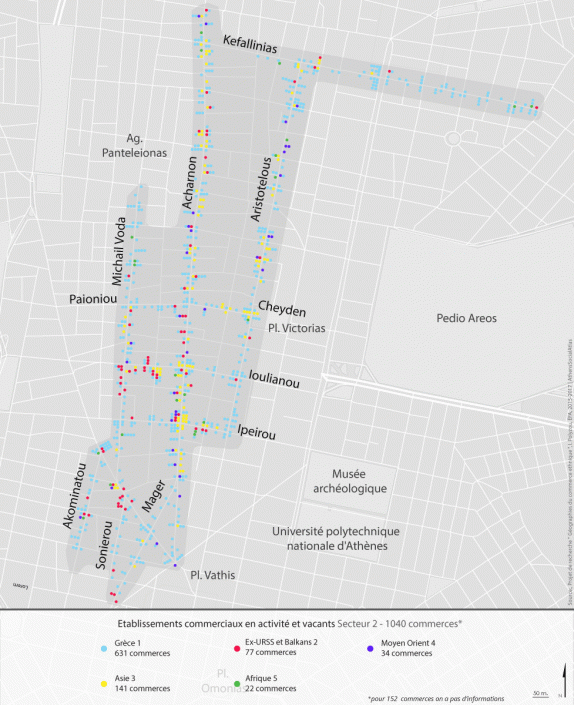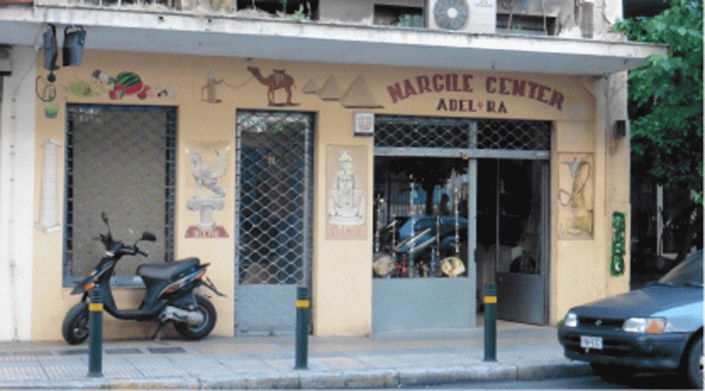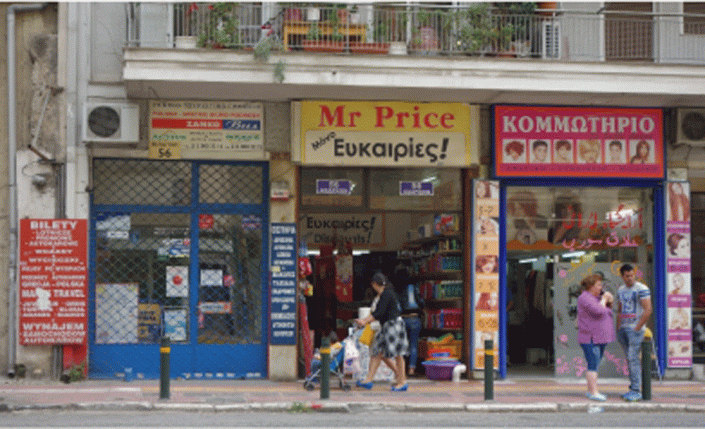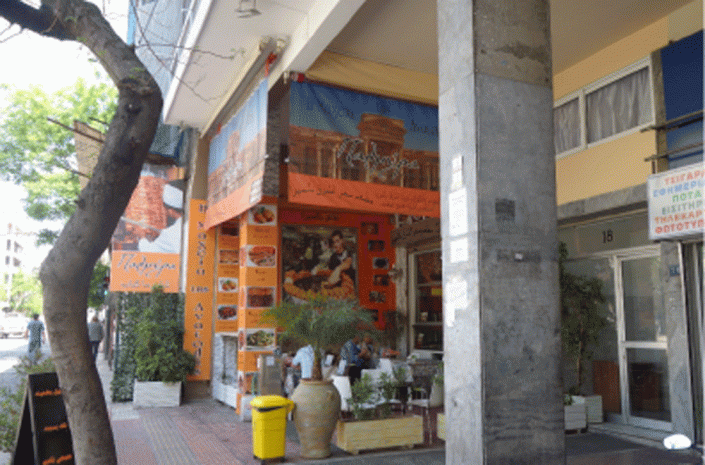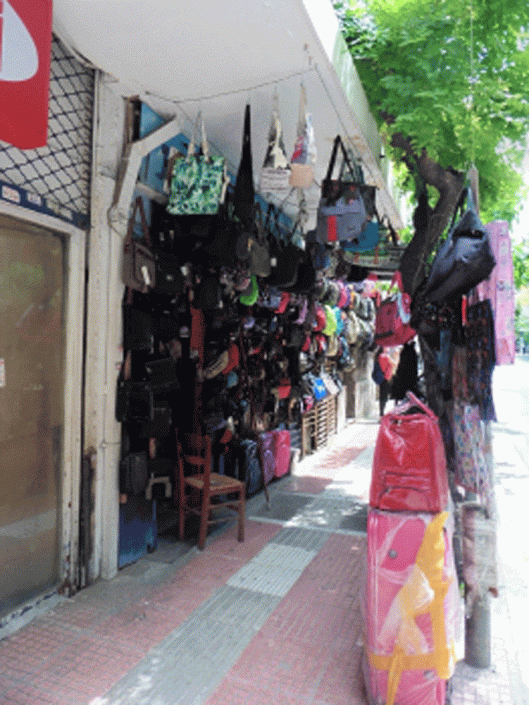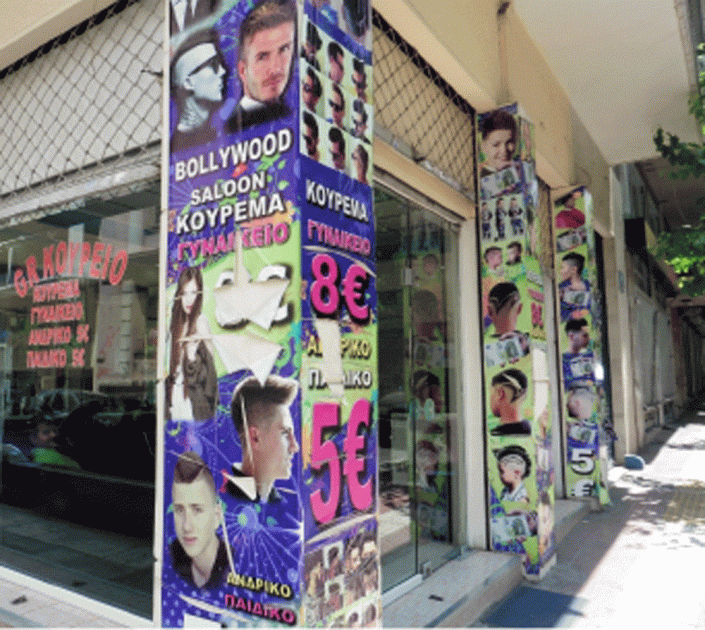Coexistence at the micro-scale. The case study of migrant entrepreneurship in the center of Athens
Polyzou Iris
Economy, Ethnic Groups, Social Structure
2024 | Mar
The stores and services of migrant entrepreneurs are one of the main components of the commercial fabric of Athens’ city center, contributing to its ethnic diversification and vitality of its retail landscape. Firstly, the article offers a broader picture of their spatial settlement, using data from the Athens Chamber of Commerce and Industry registry (EBEA). Secondly, the article focuses on the street scale to investigate the socio-entrepreneurial practices and the spatial dynamics among entrepreneurs of different nationalities. To do so, the article draws qualitative data from a Research program, coordinated by the author. Specifically, material of the field research, which includes an in-situ survey and semi-structured interviews with employees and business owners.
Introduction
The shops and services of entrepreneurs of migrant origin are one of the key components of the commercial fabric of Athens and one of the most visible aspects of the city’s ethnic diversity. Shopkeepers from China, Pakistan or Bangladesh makes their presence visible through the specific spatial and commercial practices that they follow. These entrepreneurial activities constitute a privileged point of entry for the study of migration in the urban space since they produce critical correlations between the spaces of residence, work, and everyday life. They also allow the study of the above critical correlations at different spatial scales: from the scale of the city to that of the street and vice versa. As migrant entrepreneurship mobilizes and relies on the transnational mobility of people, products and practices, it can further be argued that the issue under study highlights the multiple interconnections between the local and the global or, alternatively, brings to the fore the ‘globality of the local’, as described by Doreen Massey (1994:120).
The text analyzes the geographies of migrant entrepreneurship in Athens through two main data sources. First, it focuses on the level of the municipality of Athens through data provided by the Athens Chamber of Commerce and Industry for 2015. Second, it focuses on an extended part of Athens’ city center through primary data, collected through field survey [1].
Figure 1 and 2: Businesses in the zone of research
Source: Field work, Research program ” Geographies of ethnic businesses “, I. Polyzou, French School at Athens, 2015-2017
Methodologically, these two data sources will map existing variations at the municipal scale, while highlighting the ethnic diversity of the city center at the street scale. The specific methodological approach that focuses on the micro spatial scale (neighborhood, building blocks, streets), allows a correlation between the place, migrants’ practices, as well as the wider spatial dynamics that shape the commercial fabric of the city (Hall, 2013).
Municipality of Athens: distribution by nationality and type of activity
The data concerning 2.057 registered companies of the Athens Chamber of Commerce and Industry for 2015 inform as about the spatial distribution of foreign companies by nationality and type of activity. While 55% of the sample concerns business activities of EU and North American nationals, 40% of businesses are owned by third-country nationals.
From the analysis and mapping of the data, it appears that the businesses of EU and North American citizens are concentrated in the areas of Kolonaki, Evangelismos, Pangrati, Ilisia, as well as along the axes of Vasilisis Sofia, Panepistimiou, Akadimias and Stadiou. The businesses of Bulgaria, Romania and other third country nationals from the former URSS are concentrated around Omonia, with an emphasis on Karaiskaki, Vathis and Attikis squares. The businesses of citizens from China, Pakistan, Bangladesh, and other Asian countries are located in the Omonia – Gerani area, in Metaxourgeio, as well as dispersed the long of Patision axis. The businesses of citizens from Middle Eastern countries (Afghanistan, Iran, Iraq, Turkey, Syria, Lebanon, etc.) are in the city center and along Patision street. As far as entrepreneurs from African countries are concerned, there is a significant concentration in Kypseli and Amerikis square (Map 1).
Table 1 : Classification of countries of origins by number of businesses in the municipality of Athens [2].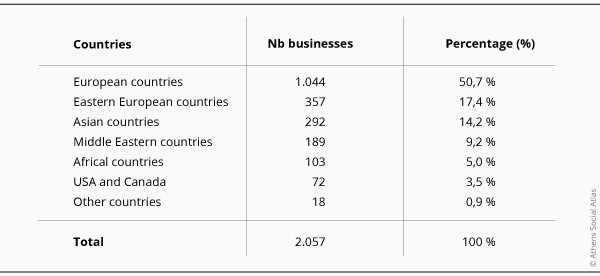
Source: EBEA registry, 2015. Field work, Research program ” Geographies of ethnic businesses “, I. Polyzou, French School at Athens, 2015-2017
Map 1 : Distribution of entrepreneurship in the municipality of Athens by nationality
Source: EBEA registry, 2015. Field work, Research program ” Geographies of ethnic businesses “, I. Polyzou, French School at Athens, 2015-2017
From the distribution of businesses in the two broadest categories (Map 2) – third country nationals and EU and North American nationals – the well-known spatial-social divide between western and eastern Athens emerges: immigrant businesses are widespread, but clearly located in the west of the city. On the contrary, businesses of EU and North American citizens are located in the east of the city.
Map 2 : Distribution of entrepreneurship in the municipality of Athens by nationality: third country nationals and EU – USA nationals
Source: EBEA registry, 2015. Field work, Research program ” Geographies of ethnic businesses “, I. Polyzou, French School at Athens, 2015-2017
In terms of business specialization by type of activity (STAKOD), EU and North American nationals outperform in the specialized sectors of financial activities, electricity and gas companies, real estate management, as well as in scientific or technical activities. Third-country nationals show a higher concentration in the wholesale and retail trade sector, while – in proportion to their total number – they slightly outnumber the construction sector.
Table 2 : Type of business activities according to the Statistical Classification of Economic Activities (STAKOD 2008) and by nationality
Source: EBEA registry, 2015. Field work, Research program ” Geographies of ethnic businesses “, I. Polyzou, French School at Athens, 2015-2017
Investigating migrant entrepreneurship at the street scale
To highlight the correlation between spatial dynamics and business concentrations, field research was conducted in the city center on 28 streets between Vathis and Agios Panteleimonas area – with Aharnon street as its main axis -, during the period 2015-2017. The area was chosen due to the important concentrations of migrant population, both as inhabitants and shopkeepers. Especially since the 2015 “refugee crisis”, this part of the city has been formed as one of the central points of reference and transit for newly arrived refugees.
The field survey of 905 businesses located on those 28 streets in 2015 showed that businesses of seventeen different nationalities coexist, to whom some ethnically mixed businesses are also added.
Table 3: Classification of countries of origins by number of businesses in the area of study
Source: EBEA registry, 2015. Field work, Research program ” Geographies of ethnic businesses “, I. Polyzou, French School at Athens, 2015-2017
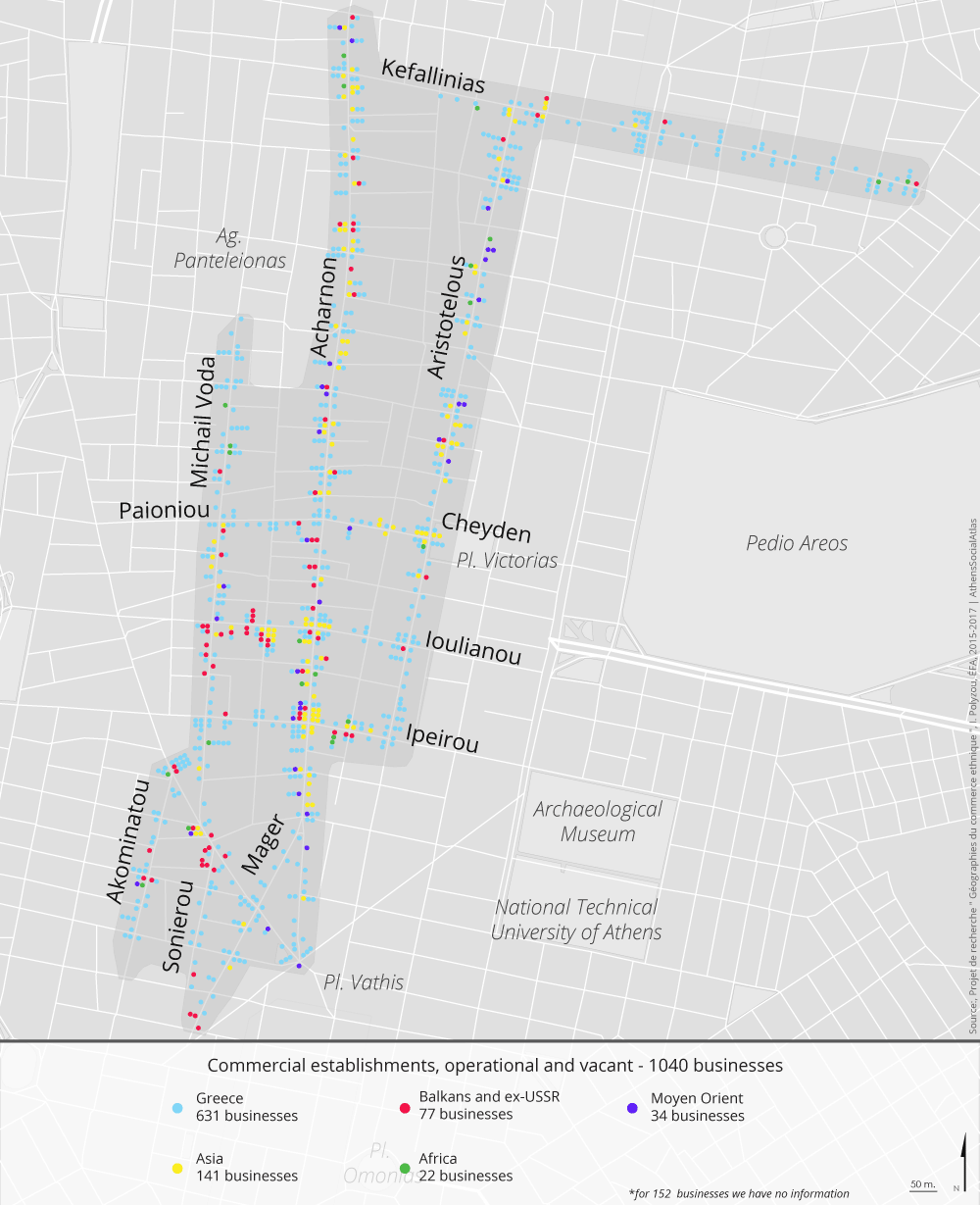 Map 3: Delimitation of the field survey within the municipality of Athens
Map 3: Delimitation of the field survey within the municipality of Athens
Source: Field work, Research program ” Geographies of ethnic businesses “, I. Polyzou, French School at Athens, 2015-2017
The significant ethnic diversity observed reflects the different phases of migration in Athens, while it is interesting to identify micro-concentrations of different nationalities within the study area. While in the first part of the area, and mainly in Karaiskaki Square and at the beginning of Michail Voda, there is a concentration of migrants’ activities from the Balkans and Eastern Europe (Poland, Bulgaria, Romania), from Victoria Square and onwards the nationalities diversify, with important concentrations from Pakistani, Bangladeshi and Afghan immigrants. Migrants from North African and Middle Eastern countries are found both in the first part of the study area, mainly with restaurants and take-way food already established before 2015-2016 (Egypt, Syria), and in smaller densities around Victoria Square, where retail businesses, such as mini markets runed by shopkeepers from Afghanistan and Syria, are located.
Figures 3,4 & 5: Businesses in the zone of research
Source: Field work, Research program ” Geographies of ethnic businesses “, I. Polyzou, French School at Athens, 2015-2017
Exploring aspects of socio-spatial diversity through the case of migrant entrepreneurs
To study the above geographical micro-concentrations, interviews were conducted with shopkeepers and employees in the study area. The interviews highlighted the multiple constraints faced by small scale entrepreneurs settled in the city center as an outcome of the overall economic crisis (Αρανίτου, 2021), constraints which are even more intense due to the migrant origin of our interviewees (Πολύζου, 2021). However, the material collected put forward practices of “survival” within the restrictive context.
A first topic that emerged is related to business practices of attracting a mixed ethnic clientele. A hair salon on Acharnon street, owned by a Pakistani businessman, has two employees: a Bulgarian woman and a Bangladeshi man. The woman, who works occasionally and only at certain hours in the hair salon, serves a female clientele from Balkan and Eastern European countries. The man, who “keeps” the business running all day, serves mostly men from Pakistan and Bangladesh. This ethnic broadening of the employee profile clearly reflects a business strategy of attracting a diverse clientele, ethnically as well as gender based. Moreover, on the shopfront, the working hours and the prices are written in both languages, plus in Greek and English.
A second issue concerns the various connections between the local and the global scale that structure the functioning of migrants’ businesses. A Bangladeshi owner of a mini market, in order to meet the needs of his expanded clientele and at the same time to reduce the operating costs, relies on different supply networks, within and outside the country: ethnically marked products, such as rice and spices, are imported from Dubai, sanitary and cleaning products from a wholesaler in Attica – which in turn is supplied by an international supermarket chain –finally, fresh fruits and vegetables from a Bangladeshi farmer based in Attica. In other terms, the operation of those businesses is largely based on transnational social and economic networks, putting forward the “globalization from below” of Athens’ central neighborhoods (among others, see Portes 1999; Choplin, Pliez 2015).
A third topic that emerged during the interviews is related to the adaptability of entrepreneurship to the wider socio-economic context, either nationally or locally (Hiebert, Rath, Vertovec 2014; Χατζηπροκοπίου, Φραγκόπουλος, 2015).
The interviews illustrated that the crisis of 2008-2010 affected migrants’ businesses in a variety of ways. Through our sample, we discern two main patterns: in some of the case, the economic crisis was the main reason for opening a business, in search of a secured environment and as an answer to unemployment or under-employment. In other cases, the crisis functioned as an occasion for readjusting an existing business in terms of products, opening hours, clientele, among others (Polyzou 2019).
The cases bellow are indicative:
| We have been in the same store for 8 years. Now we have changed products. Before we had mobile phones, watches and other electronic devices. Now we sell cheaper products for refugees. They buy sleeping bags, tents, about 15 euros. Greeks mainly buy fans.
(Interview extract, 2015, Nour, Bangladesh, Heiden street, retail shop). |
| In the summer last year, it was very good for us, every day you had a lot of kids coming to get their hair cut. They would pass through here and then move on to… As long as Germany had its borders open, it was very good here for us.
(Interview extract, 2017, Ahmed, Pakistan, Acharnon street, hair salon). |
Originally from Egypt, Sami worked as a house painter until 2011. At first, as an employee and then on his own. But the crisis hardly affected his sector, so he decided to spend everything he had to open a mini market with his wife:
| We had people every day, mainly there were customers because of the Tax Office on Ipiru Street. Every day we sold soft drinks, cigarettes, and made photocopies. The money may have been small, 1 euro, 3 euro, but there were customers every day. Since the day the tax office left, the business has not been doing well…. We are forced to throw away products».
(Interview extract, Sami, Egypt, Ipirou street, mini market). |
«We had people every day, mainly there were customers because of the Tax Office on Ipiru Street. Every day we sold soft drinks, cigarettes, and made photocopies. The money may have been small, 1 euro, 3 euro, but there were customers every day. Since the day the tax office left, the business has not been doing well…. We are forced to throw away products». (Interview extract, Sami, Egypt, Ipirou street, mini market).
Conclusions
As mentioned in the introduction, our research on migrant entrepreneurship was articulated from the scale of the municipality to the scale of the neighborhood and the street. The purpose of this methodological approach was to investigate two main issues: on the one hand, the existence of ethnic and spatial segregations at the municipality level and, on the other hand, the micro-geographies and settlement practices related to starting and running a business in specific downtown shopping streets. While the data of the Chamber of commerce (EBEA) testifies distinct geographies of establishment according to the nationality of the entrepreneurs, the field study indicates that the streets of the city center are characterized by ethnic diversity. The coexistence of shop owners of different origins, allows the expansion of their customer base and brings to the fore commercial practices that are based on local networks, while mobilising supra-local connections for the supply of goods, for finding an initial capital, for hiring employees, etc. Regarding the issue of the retail crisis of small and medium-sized stores in Athens, our research pointed out the importance migrants’ business activites as a constituent element of the commercial fabric of the city. According to the field survey, in the study area migrant’ businesses make up about 10% of the total business activity. Thus, they participate in the vitality of several business premises that would otherwise remain closed.
[1] The article is based on a research program carried out at the French School of Athens (École française d’Athènes) in the period 2015-2018, the planning and coordination of which was carried out by the author of the article. The field research was carried out by a four-member research team consisting of Semia Samara, Dr. University of Nanterre, Dimitris Balampanidis Dr. Harokopio University, Loukas Triantis, Assistant professor AUTH AND Stavros Spyrellis, Researcher at EKKE.
[2] The classification of countries of origins follows broader geographical categories, while the businesses of Bulgarian and Romanian nationals formed a separate category due to their significant number
Entry citation
Polizou, I. (2024), Coexistence at the micro-scale. The case study of migrant entrepreneurship in the center of Athens, in Maloutas T., Spyrellis S. (eds) Athens Social Atlas. Digital compendium of texts and visual material. URL: https://www.athenssocialatlas.gr/en/article/immigrant-entrepreneurship-in-central-athens/ , DOI: 10.17902/20971.124
Atlas citation
Maloutas T., Spyrellis S. (eds) (2015) Athens Social Atlas. Digital compendium of texts and visual material. URL: https://www.athenssocialatlas.gr/en/ , DOI: 10.17902/20971.9
References
- Αρανίτου Β (2021) Retailing, Ιστορία, Οικονομία, Μετασχηματισμοί στο Λιανικό Εμπόριο. Αθήνα: Εκδόσεις Κέρκυρα – Economia Publishing.
- Ερευνητικό Πρόγραμμα «Γεωγραφίες εθνοτικού εμπορίου», επιστ. Υπεύθυνη Ι. Πολύζου, Γαλλική Σχολή Αθηνών, 2015-2017.
- Choplin A and Pliez O (2015) The Inconspicuous Spaces of Globalization. Articulo – Journal of Urban Research, 12, online since 21 March 2016.
- Massey D (1994) Space, Place and Gender. Minneapolis, University of Minnesota Press.
- Smith M-P (2005) Transnationalism and the City. In Kelleher A και Klein L Global perspectives: a handbook for understanding global issues, New Jersey: Prentice Hall:119-139.
- Glick Schiller N and Çaglar A (2013) Locating migrant pathways of economic emplacement: Thinking beyond the ethnic lens. Ethnicities 13 (4): 494-514.
- Hall S (2013) Super-diverse street: a “trans-ethnography” across migrant localities. Ethnic and Racial Studies 38 (1): 1-15.
- Hiebert D, Rath J and Vertovec S (2014) Urban Markets and Diversity: Toward a Research Agenda, Max Planck Institute for the Study of Religious and Ethnic Studies, Working Paper 14 (6): 1-34.
- Καυταντζόγλου Ρ (2013) Οδός Ιπποκράτους: απόπειρα χαρτογράφησης ενός δρόμου στο κέντρο της πόλης. Στο Θ Μαλούτας κ.ά., Το κέντρο της Αθήνας ως πολιτικό διακύβευμα, Αθήνα: ΕΚΚΕ.
- Πολύζου Ι (2021) Γεωγραφίες λιανικού εμπορίου: δυναμικές και διακυβεύματα στην Αθήνα σήμερα. Στο Β. Αρανήτου (επιμ.), Retailing, Ιστορία, Οικονομία, Μετασχηματισμοί στο Λιανικό Εμπόριο. Αθήνα: Εκδόσεις Κέρκυρα – Economia Publishing.
- Polyzou I (2020) Invest the city by doing businesses: Geographies of migrant entrepreneurs in the center of Athens, The Greek Review of Social Research 153: 62-81.
- Portes A (1999) La mondialisation par le bas. Actes de la recherche en sciences sociales 129:15-25.
- Zukin S, Kasinitz P and Chen X (2016) Global Cities, Local Streets: Everyday Diversity from New York to Shanghai, New York: Routledge.
- Χατζηπροκοπίου Π και Φραγκόπουλος Γ (2015) Αντιμέτωποι με την κρίση: προκλήσεις για τη μεταναστευτική επιχειρηματικότητα στην Αθήνα σε μια εποχή ύφεσης και λιτότητας. Στο Επιθεώρηση Κοινωνικών Ερευνών 145 (Β):1-19.

